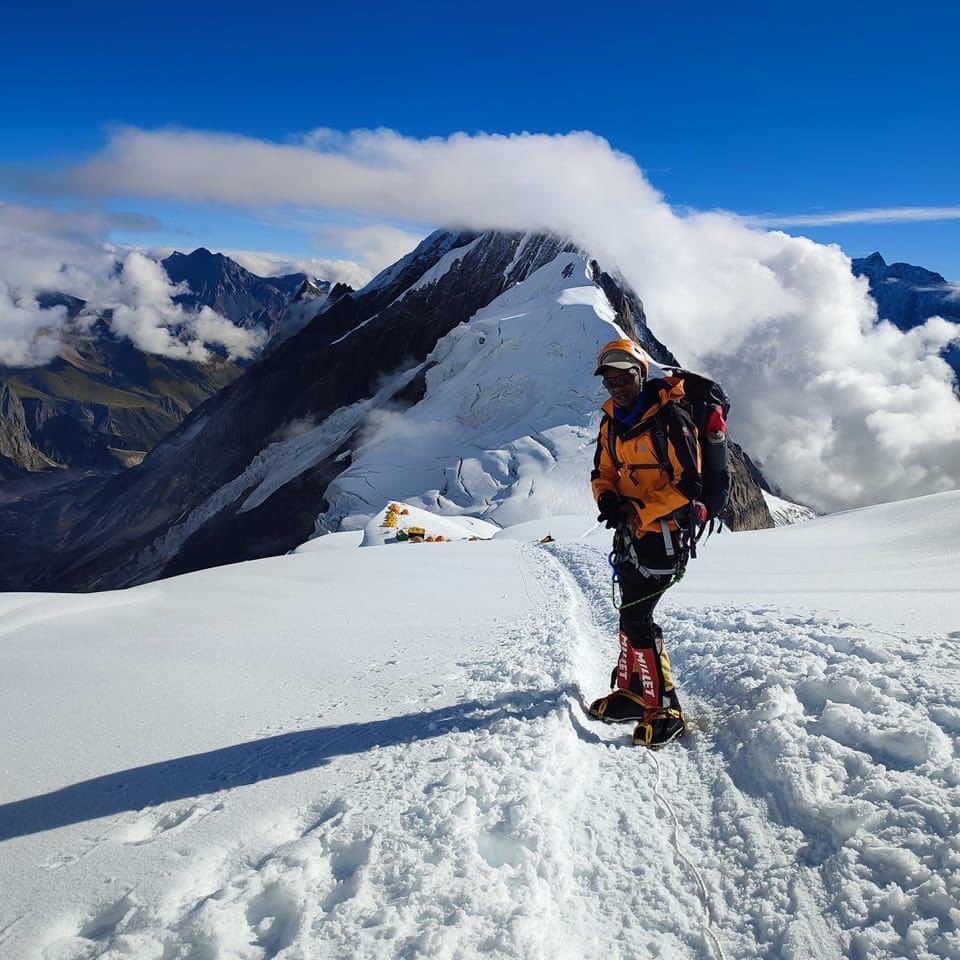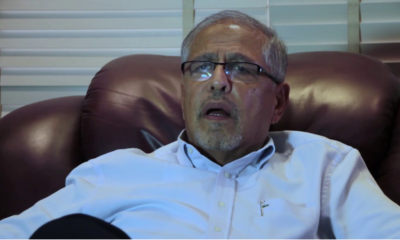News
Why Cheruiyot Kirui‘s Body May Be Left Forever In The Mountain: A Breakdown Of The Cost And Risky Task Retrieving Bodies From Mt. Everest
Nearly 300 people died on the mountain in that period according to the Himalayan Database. Nepal officials estimate that about 200 bodies remain scattered across Everest.

Kenyan climber Cheruiyot Kirui met a tragic fate on Mount Everest, leaving the nation in mourning on Thursday.
Discovered dead above 8,000 meters, his loss reverberates deeply in the climbing community and beyond.
This is because retrieving bodies at Mt Everest is a dangerous endeavor and also expensive and torturous to get them down.
Business Insider reports that final repatriation costs tens of thousands of dollars (in some cases, around $70,000 (Sh9 million), and can also come at a fatal price itself.
In 1984, two Nepalese climbers died trying to recover a body from Everest.
An article by Mount Kilimanjaro dated April 15, 2024, titled, Retrieving bodies from Mount Everest, the process and cost, states that recovering dead bodies is not as easy as it may sound, it is a long and costly process in itself.
The majority of the bodies are discovered at elevations greater than 8,000 meters because the amount of oxygen that is accessible at this point is approximately one-third of what is available at sea level, referred to as the death zone.
Depending on how long the person has been up there, there is a possibility that they have frozen onto the mountain and transportation with a deceased body is extremely challenging.
There are occasions when it is partially covered by snow or the individual has fallen to an inaccessible position, hence the process of recovering the body can be difficult and time-consuming.
The repartition process is typically associated with exorbitant charges, which can occasionally reach tens of thousands of dollars.
For a retrieval to happen, a group of rescuers or Sherpas is required as they can unearth frozen corpses and carry the added weight down a hazardous mountain.
The article notes that the expense of recovering a single body can be as much as 100,000 dollars or even higher making it impossible for bodies to be recovered.
Some of the challenges include:
The Harsh Environment
Extreme Altitude and Weather: The upper reaches of Everest, known as the “death zone” above 8,000 meters, are characterized by extreme cold, high winds, and low oxygen levels. These conditions not only make climbing physically demanding but also severely hinder rescue and recovery operations. Temperatures can drop to -40 degrees Celsius, and wind speeds can exceed 100 kilometers per hour (62 miles per hour), creating a perilous environment for any recovery team.
Lack of Oxygen: At such high altitudes, the oxygen levels are only about a third of what they are at sea level. This scarcity of oxygen leads to rapid fatigue, impaired judgment, and a high risk of altitude sickness. Even experienced climbers find it difficult to perform basic tasks, let alone the strenuous work of body retrieval.
Logistical Challenges
Technical Difficulties: Retrieving a body from Everest requires navigating steep, icy slopes, crevasses, and seracs (towering blocks of ice). Many bodies lie in inaccessible or dangerous locations, making it almost impossible to reach them without significant risk.
Weight and Equipment: Bodies often freeze and become as heavy as 300 pounds (136 kilograms) due to the added weight of the ice and snow. Carrying such weight down treacherous terrain is a Herculean task, requiring specialized equipment like pulleys, ropes, and sleds. Moreover, every team member involved in the operation must carry their survival gear, which adds to the logistical burden.
Limited Window of Opportunity: The best times for recovery missions are during the brief climbing seasons in spring (May) and fall (September). Even then, weather windows can be narrow, sometimes only a few days, which limits the time available for safe retrieval operations.
High Costs
1. Expensive Operations: Recovery missions are highly specialized and require significant financial resources. The cost can range from 30,000 dollars to 100,000 dollars per body, depending on the location and difficulty of the retrieval. This includes paying for skilled Sherpas, helicopter support, equipment, and other logistical expenses.
2. Insurance and Permits: In addition to the operational costs, there are expenses related to insurance and permits. Climbing permits alone can cost more than 20 dollars per person, and additional fees may be required for rescue and recovery operations. Insurance is necessary to cover potential medical evacuations and other unforeseen incidents.
Human Risks and Ethical Considerations
1. Risk to Rescuers: The safety of those attempting the retrieval is paramount. Sherpas and other climbers who assist in these missions put their lives at significant risk. The danger of avalanches, falling ice, and sudden weather changes is ever-present. Many have died in the process of rescuing others or retrieving bodies, making it a perilous endeavor.
About 300 climbers have died since Everest was first conquered in 1953, and at least 100 — maybe 200 — corpses remain on the mountain. Most are hidden in deep crevasses or covered by snow and ice, but some are visible and have become macabre landmarks, earning nicknames for their plastic climbing boots, colorful parkas, or final resting poses.
The most difficult bodies to retrieve are near the 8850m summit in the low-oxygen area known by mountaineers as the death zone.
About 5000 people have reached the 29,029-foot summit of Everest at least once since Tenzing Norgay and Edmund Hillary first did it in 1953.
Nearly 300 people died on the mountain in that period according to the Himalayan Database. Nepal officials estimate that about 200 bodies remain scattered across Everest.
Most of the bodies are far out of sight. Some have been moved, dumped over cliffs or into crevasses at the behest of families bothered that their loved ones were someone else’s landmark or at the direction of Nepali officials who worry that the sight of dead bodies hinders the country’s tourist trade.
On average, six people die climbing the world’s tallest peak each year. The year 2015 was the mountain’s deadliest in recent history when an avalanche killed 19.
Climbing season in 2023 came close to that record with at least 12 deaths and five more climbers missing and presumed dead. It was also the most crowded year on the mountain yet. Nepal issued a record 463 permits.
The 40-year-old Kirui, accompanied by Nepali guide Nawang Sherpa, embarked on a historic mission to conquer Everest without supplemental oxygen. However, their aspirations turned tragic as Kirui’s body was found by the Seven Summit Treks rescue team, just below the summit.
The Kenya Commercial Bank employee went out of contact from the Bishop Rock zone.
Kirui becomes the second hiker to be confirmed dead in the ill-fated expedition after Romanian climber, Gabriel Tavara, was found lifeless inside his tent at Camp III on Tuesday.
Mr Tavara, 48, was also attempting to climb Lhotse without supplementary oxygen.
A Romanian climber, a British climber and his Nepalese guide were also found dead on Tuesday, the Himalayan Times reported.
He was attempting to reach the summit of the world’s highest mountain above sea level in his quest to test the limitations of the human body.
Mt Everest, which straddles the border of China and Nepal, stands 8,849 metres (29,032 feet) tall.
On May 9, 2024, Kirui reported on his Instagram page that he and his fellow hikers had successfully made rotation number two in their quest to reach the Mt Everest summit.
For Mr Kirui’s family, retrieving his body and repatriating it back to the country is not a walk in the park.
Kenya Insights allows guest blogging, if you want to be published on Kenya’s most authoritative and accurate blog, have an expose, news TIPS, story angles, human interest stories, drop us an email on [email protected] or via Telegram
-

 Business6 days ago
Business6 days ago‘They’re Criminals,’ Popular Radio Presenter Rapcha The Sayantist Accuses Electric Bike Firm Spiro of Fraudulent Practices
-

 News1 week ago
News1 week agoTemporary Reprieve As Mohamed Jaffer Wins Mombasa Land Compensation Despite Losing LPG Monopoly and Bitter Fallout With Johos
-

 Investigations1 week ago
Investigations1 week agoFrom Daily Bribes to Billions Frozen: The Jambopay Empire Crumbles as CEO Danson Muchemi’s Scandal-Plagued Past Catches Up
-

 Sports1 week ago
Sports1 week ago1Win Games 2025: Ultimate Overview of Popular Casino, Sports & Live Games
-

 Investigations7 days ago
Investigations7 days agoDisgraced Kuscco Boss Arnold Munene Moves To Gag Media After Expose Linking Him To Alleged Sh1.7 Billion Fraud
-

 Business4 days ago
Business4 days agoIt’s a Carbon Trading Firm: What Kenyans Need to Know About Spiro’s Business Model Amid Damning Allegations of Predatory Lending
-

 Business1 week ago
Business1 week agoHass Petroleum Empire Faces Collapse as Court Greenlights KSh 1.2 Billion Property Auction
-

 Business3 days ago
Business3 days agoManager Flees Safaricom-Linked Sacco As Fears Of Investors Losing Savings Becomes Imminent
















